From 1934 on, Studio Harcourt in Paris immortalised some of the greatest figures of the 20th century. The French dream factory produced 1,500 iconic black and-white photographs of film stars as Gérard Philippe, Simone Signoret and Michèle Morgan, and singers as Edith Piaf, Charles Trenet and Juliette Gréco.

Juliette Gréco. French postcard by Editions du Globe (EDUG), no. 191. Photo: Studio Harcourt, Paris.

Daniel Gelin. French postcard by Editions du Globe, Paris, no. 156. Photo: Studio Harcourt.
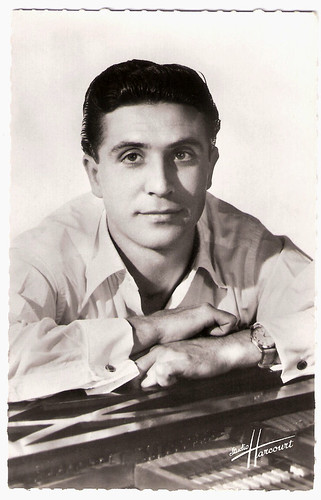
Gilbert Bécaud. French postcard by Editions du Globe (EDUG), no. 250. Photo: Studio Harcourt.
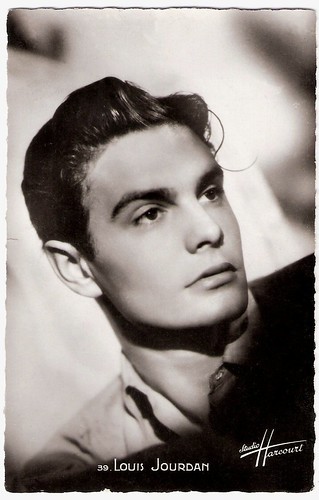
Louis Jourdan. French postcard by S.E.R.P., Paris, no. 39. Photo: Studio Harcourt.
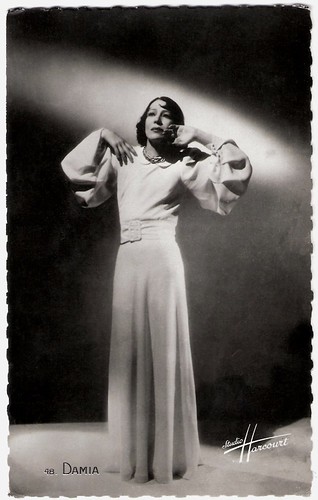
Damia. French postcard by S.E.R.P., no. 48. Photo: Studio Harcourt.

Brigitte Bardot. French postcard by Editions du Globe, Paris, no. 338. Photo: Studio Harcourt.
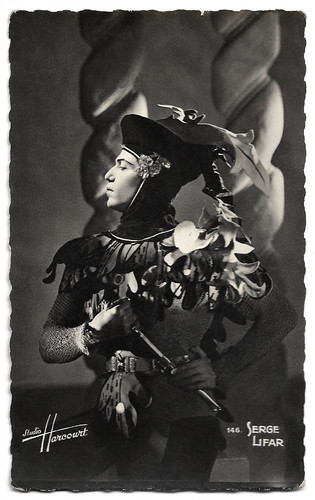
Serge Lifar. French postcard, no. 146. Photo: Studio Harcourt.
Cosette Harcourt founded Studio Harcourt in 1934, at a time when prestigious photo studios like Nadar closed for lack of clients. The new studio, located in a mansion on avenue Iéna, in the 16th arrondissement, was financed by the French publishers Jacques and Jean Lacroix, and Robert Ricci, son of Nina Ricci.
Cosette Harcourt a.k.a. Germaine Hirschefeld (1900–1976) was a photographer who had worked in the studio of the brothers Manuel. The original concept was to photograph for Lacroix’s publications Hello! for the French intelligentsia.
The change in direction came when Cosette Harcourt started to specialise in black-and-white glamour photography of figures from French cinema and culture. Harcourt photographed celebrities like Marlene Dietrich, Edith Piaf, Maurice Chevalier, Josephine Baker, and Coco Chanel.
She always used 24 x 30 cm prints immediately recognisable for their distinctive style and lighting. This typical Harcourt style consists in a photo taken at close distance to the subject in its best light, generally creating a halo of light and dark, on a gray-to-black background.
At his blog, Belgian photographer-teacher Herman Huys writes that the studio uses only Tungsten lighting: “Each part of the body or the face is illuminated separately by a light with a power of 500watt. Each light have also barn doors, so the photographer can manipulate the beam of light, a small part is lighted.”
Reflectors lower the contrast in the shadows. The attitude of the subject is personal, often wearing a slight smile, but somehow the Harcourt photos always feel a little staged. The Harcourt logo is featured prominently in the lower right-hand (sometimes left-hand) corner on every print and postcard.
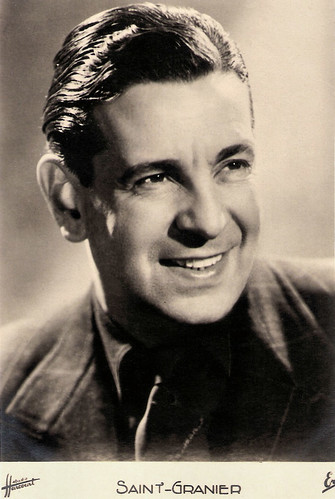
Saint-Granier. French postcard by Erpé. Photo: Studio Harcourt.
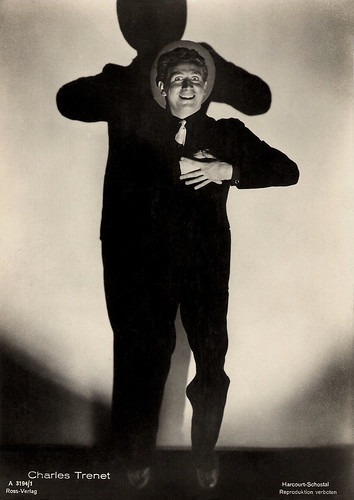
Charles Trenet. German postcard by Ross-Verlag, no. A 3194, 1941-1944. Photo: Harcourt-Schostal.

Marika Rökk. French postcard by S.E.R.P., Paris, no. 65. Photo: Studio Harcourt.
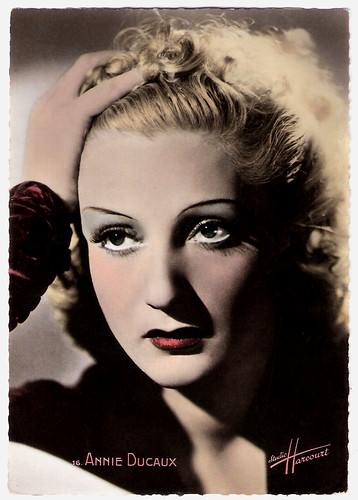
Annie Ducaux. French postcard by GREFF, S.E.R.P., Paris, no. 16. Photo: Studio Harcourt.
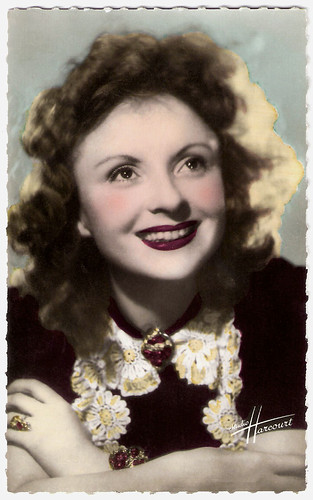
Odette Joyeux. French postcard by Editions O.P., Paris, no. 46. Photo: Studio Harcourt.
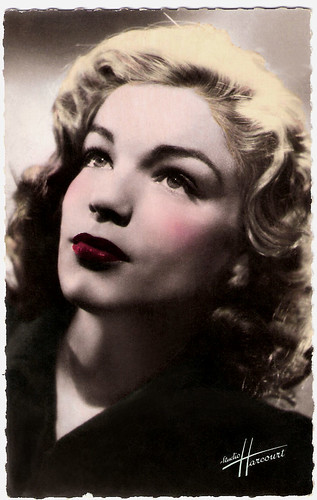
Simone Signoret. French postcard by Editions O.P., no. 19. Photo: Studio Harcourt.
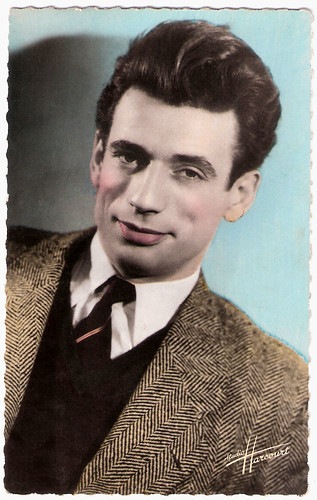
Yves Montand. French postcard by Editions O.P., Paris, no. 11. Photo: Studio Harcourt.
The Harcourt style was inspired by the lighting effects which cinematographer Henri Alekan used in black & white films of Jean Cocteau and other great French directors of the 1930s and 1940s.
Around the time of World War II, Cosette Harcourt who was Jewish, married one of the Lacroix brothers. Together they created a magazine, called Stars, to serve as an outlet for studio photos.
During the occupation the German officers and many members of the regime of Vichy visited the studios, just as the Americans did after the French Liberation.
After the war, Harcourt regained its momentum with the photography of stars like Jean Gabin, Gérard Philipe, Anouk Aimée, Brigitte Bardot and Alain Delon. The studio continued the tradition that made it successful initially and having your photo taken at Harcourt a few times during your life became standard for the French elite.
In the 1960s with the rise of the Nouvelle Vague and the dawn of a realist, anti glamorous aesthetic the studio’s peak was over. Clients demanded to be photographed at home, on location, away from anywhere that resembled a conventional studio. With the innovation of the flash, the magic and mystery of the studio disappeared. And nobody wanted black and white portraits anymore.
After the death of Cosette Harcourt in 1976, the ownership of the studio changed several times. In 2000, under the leadership of Jack Lang, the French state bought the photos of Studio Harcourt from between 1934 to 1991: about 5 million negatives of 550,000 persons and 1,500 celebrities. The collection is distributed by the Réunion des Musées Nationaux (RMN).
In 2007, Studio Harcourt was bought by Francis Dagnan with Catherine Renard at the helm. Its tradition has been reinstated: there are no star photographers and all employees work for Studio Harcourt. The studio is now located at 6, rue de Lota near the Porte Dauphine. Having your photo taken at Harcourt in a 2 hour session costs from 1,995 Euros.
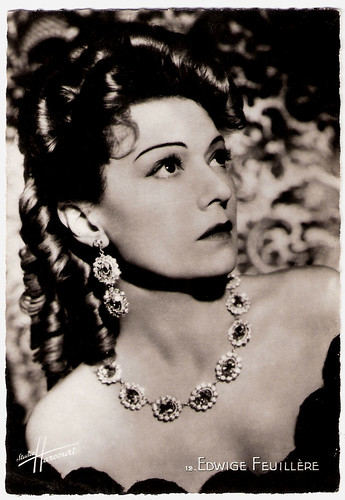
Edwige Feuillère. French postcard by S.E.R.P., Paris, no. 12. Photo: Studio Harcourt.
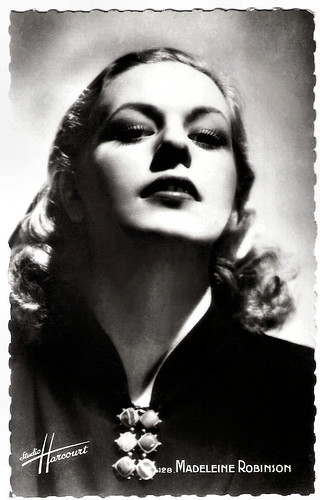
Madeleine Robinson. French postcard by SERP, no. 128. Photo: Studio Harcourt.

Alain Cuny. French postcard by S.E.R.P., Paris, no. 252. Photo: Studio Harcourt.
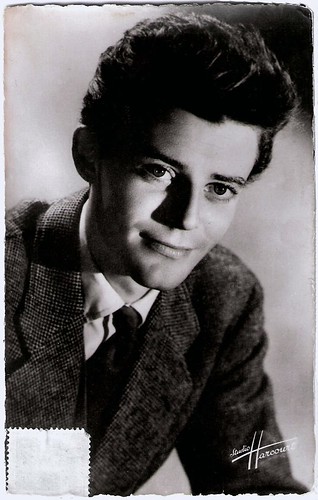
Gérard Philipe. French postcard by Editions du Globe (E.D.U.G.), Paris, no. 31. Photo: Studio Harcourt.
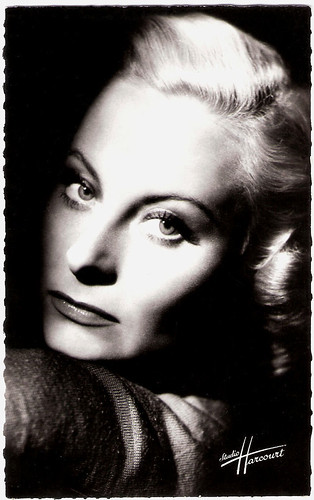
Michèle Morgan. French postcard by Editions du Globe (E.D.U.G.), no. 66. Photo: Studio Harcourt.
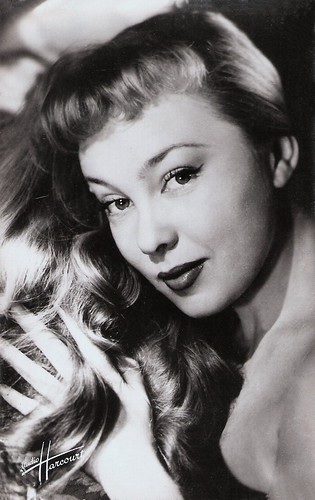
Dominique Wilms. French postcard by Editions du Globe (E.D.U.G.), no. 233. Photo: Studio Harcourt.
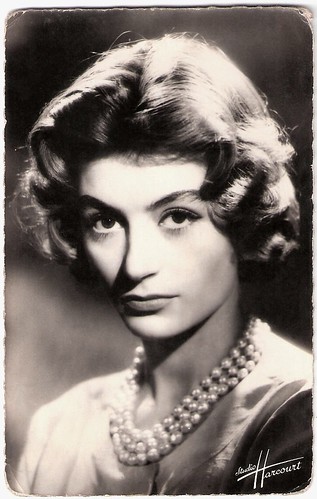
Anouk Aimée. French postcard by Editions du Globe (E.D.U.G.), Paris, no. 702. Photo: Studio Harcourt.
Sources: Margaret Kemp (Bonjour Paris), Sascha Lehnartz (Welt online - German), Herman Huys, Studio-Harcourt.eu, and Wikipedia.

Juliette Gréco. French postcard by Editions du Globe (EDUG), no. 191. Photo: Studio Harcourt, Paris.

Daniel Gelin. French postcard by Editions du Globe, Paris, no. 156. Photo: Studio Harcourt.

Gilbert Bécaud. French postcard by Editions du Globe (EDUG), no. 250. Photo: Studio Harcourt.

Louis Jourdan. French postcard by S.E.R.P., Paris, no. 39. Photo: Studio Harcourt.

Damia. French postcard by S.E.R.P., no. 48. Photo: Studio Harcourt.

Brigitte Bardot. French postcard by Editions du Globe, Paris, no. 338. Photo: Studio Harcourt.

Serge Lifar. French postcard, no. 146. Photo: Studio Harcourt.
Hello!
Cosette Harcourt founded Studio Harcourt in 1934, at a time when prestigious photo studios like Nadar closed for lack of clients. The new studio, located in a mansion on avenue Iéna, in the 16th arrondissement, was financed by the French publishers Jacques and Jean Lacroix, and Robert Ricci, son of Nina Ricci.
Cosette Harcourt a.k.a. Germaine Hirschefeld (1900–1976) was a photographer who had worked in the studio of the brothers Manuel. The original concept was to photograph for Lacroix’s publications Hello! for the French intelligentsia.
The change in direction came when Cosette Harcourt started to specialise in black-and-white glamour photography of figures from French cinema and culture. Harcourt photographed celebrities like Marlene Dietrich, Edith Piaf, Maurice Chevalier, Josephine Baker, and Coco Chanel.
She always used 24 x 30 cm prints immediately recognisable for their distinctive style and lighting. This typical Harcourt style consists in a photo taken at close distance to the subject in its best light, generally creating a halo of light and dark, on a gray-to-black background.
At his blog, Belgian photographer-teacher Herman Huys writes that the studio uses only Tungsten lighting: “Each part of the body or the face is illuminated separately by a light with a power of 500watt. Each light have also barn doors, so the photographer can manipulate the beam of light, a small part is lighted.”
Reflectors lower the contrast in the shadows. The attitude of the subject is personal, often wearing a slight smile, but somehow the Harcourt photos always feel a little staged. The Harcourt logo is featured prominently in the lower right-hand (sometimes left-hand) corner on every print and postcard.

Saint-Granier. French postcard by Erpé. Photo: Studio Harcourt.

Charles Trenet. German postcard by Ross-Verlag, no. A 3194, 1941-1944. Photo: Harcourt-Schostal.

Marika Rökk. French postcard by S.E.R.P., Paris, no. 65. Photo: Studio Harcourt.

Annie Ducaux. French postcard by GREFF, S.E.R.P., Paris, no. 16. Photo: Studio Harcourt.

Odette Joyeux. French postcard by Editions O.P., Paris, no. 46. Photo: Studio Harcourt.

Simone Signoret. French postcard by Editions O.P., no. 19. Photo: Studio Harcourt.

Yves Montand. French postcard by Editions O.P., Paris, no. 11. Photo: Studio Harcourt.
German and American Officers
The Harcourt style was inspired by the lighting effects which cinematographer Henri Alekan used in black & white films of Jean Cocteau and other great French directors of the 1930s and 1940s.
Around the time of World War II, Cosette Harcourt who was Jewish, married one of the Lacroix brothers. Together they created a magazine, called Stars, to serve as an outlet for studio photos.
During the occupation the German officers and many members of the regime of Vichy visited the studios, just as the Americans did after the French Liberation.
After the war, Harcourt regained its momentum with the photography of stars like Jean Gabin, Gérard Philipe, Anouk Aimée, Brigitte Bardot and Alain Delon. The studio continued the tradition that made it successful initially and having your photo taken at Harcourt a few times during your life became standard for the French elite.
In the 1960s with the rise of the Nouvelle Vague and the dawn of a realist, anti glamorous aesthetic the studio’s peak was over. Clients demanded to be photographed at home, on location, away from anywhere that resembled a conventional studio. With the innovation of the flash, the magic and mystery of the studio disappeared. And nobody wanted black and white portraits anymore.
After the death of Cosette Harcourt in 1976, the ownership of the studio changed several times. In 2000, under the leadership of Jack Lang, the French state bought the photos of Studio Harcourt from between 1934 to 1991: about 5 million negatives of 550,000 persons and 1,500 celebrities. The collection is distributed by the Réunion des Musées Nationaux (RMN).
In 2007, Studio Harcourt was bought by Francis Dagnan with Catherine Renard at the helm. Its tradition has been reinstated: there are no star photographers and all employees work for Studio Harcourt. The studio is now located at 6, rue de Lota near the Porte Dauphine. Having your photo taken at Harcourt in a 2 hour session costs from 1,995 Euros.

Edwige Feuillère. French postcard by S.E.R.P., Paris, no. 12. Photo: Studio Harcourt.

Madeleine Robinson. French postcard by SERP, no. 128. Photo: Studio Harcourt.

Alain Cuny. French postcard by S.E.R.P., Paris, no. 252. Photo: Studio Harcourt.

Gérard Philipe. French postcard by Editions du Globe (E.D.U.G.), Paris, no. 31. Photo: Studio Harcourt.

Michèle Morgan. French postcard by Editions du Globe (E.D.U.G.), no. 66. Photo: Studio Harcourt.

Dominique Wilms. French postcard by Editions du Globe (E.D.U.G.), no. 233. Photo: Studio Harcourt.

Anouk Aimée. French postcard by Editions du Globe (E.D.U.G.), Paris, no. 702. Photo: Studio Harcourt.
Sources: Margaret Kemp (Bonjour Paris), Sascha Lehnartz (Welt online - German), Herman Huys, Studio-Harcourt.eu, and Wikipedia.
1 comment:
1,600 euros to have your photo taken! That seems unbelievable, but I suppose it's OK if it gives you the film star look. :)
Post a Comment